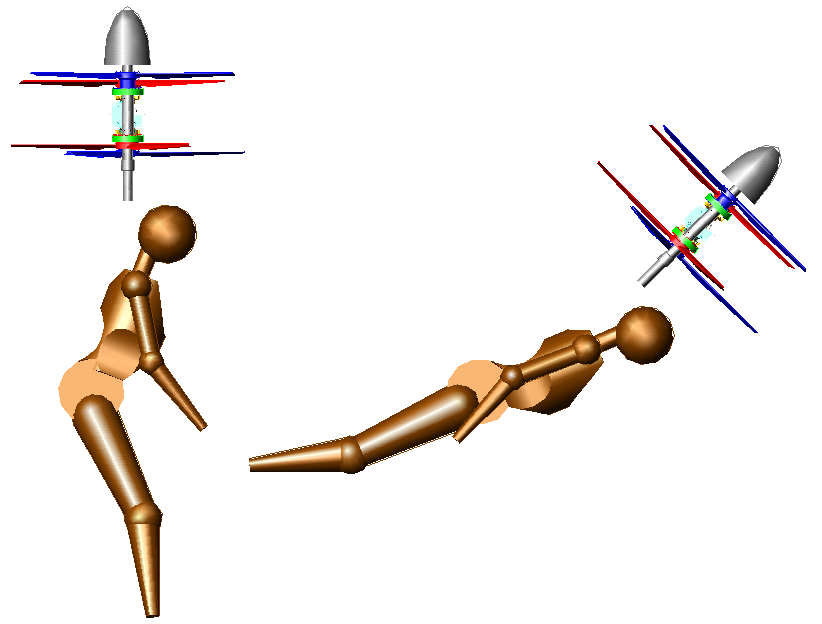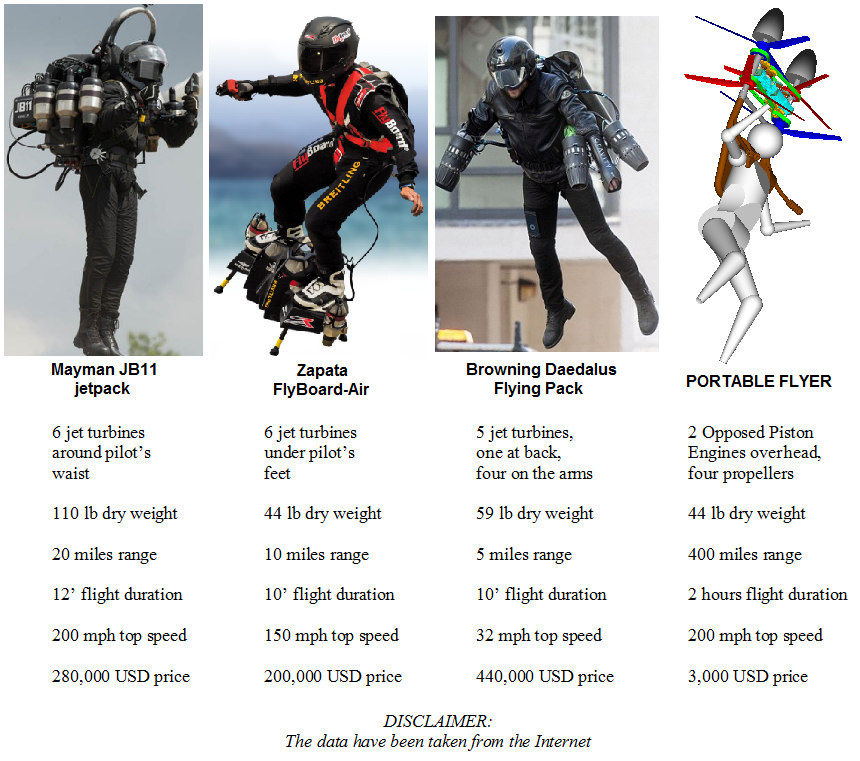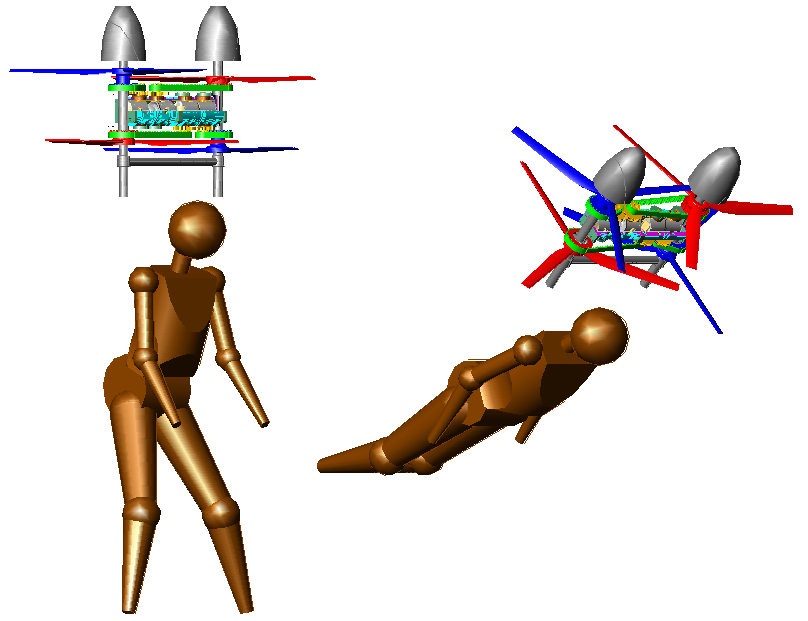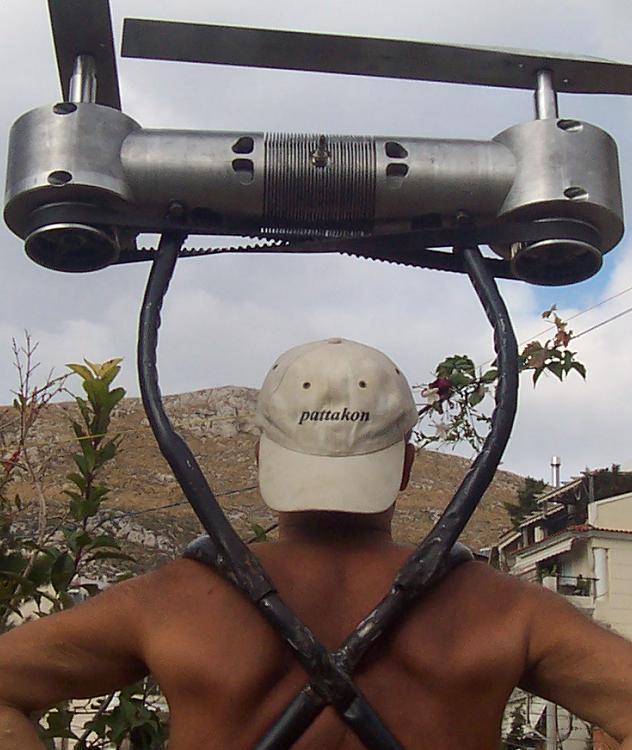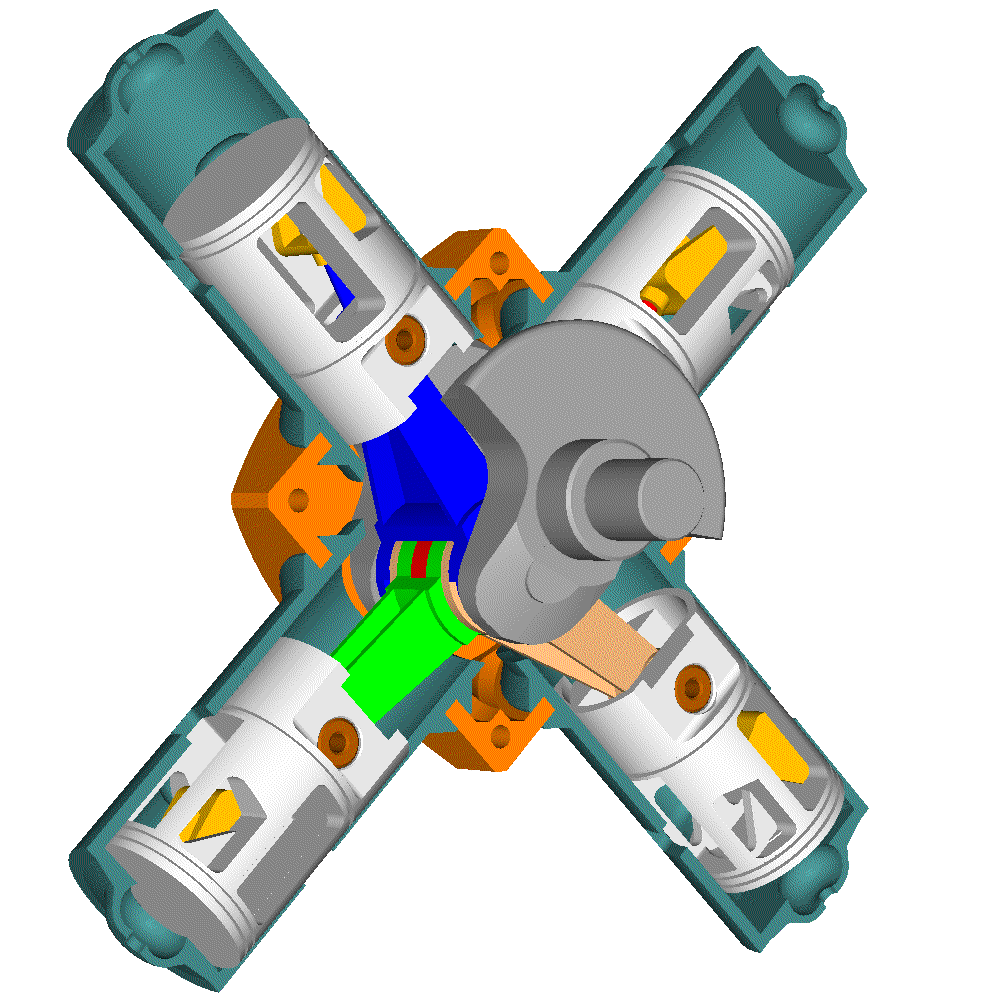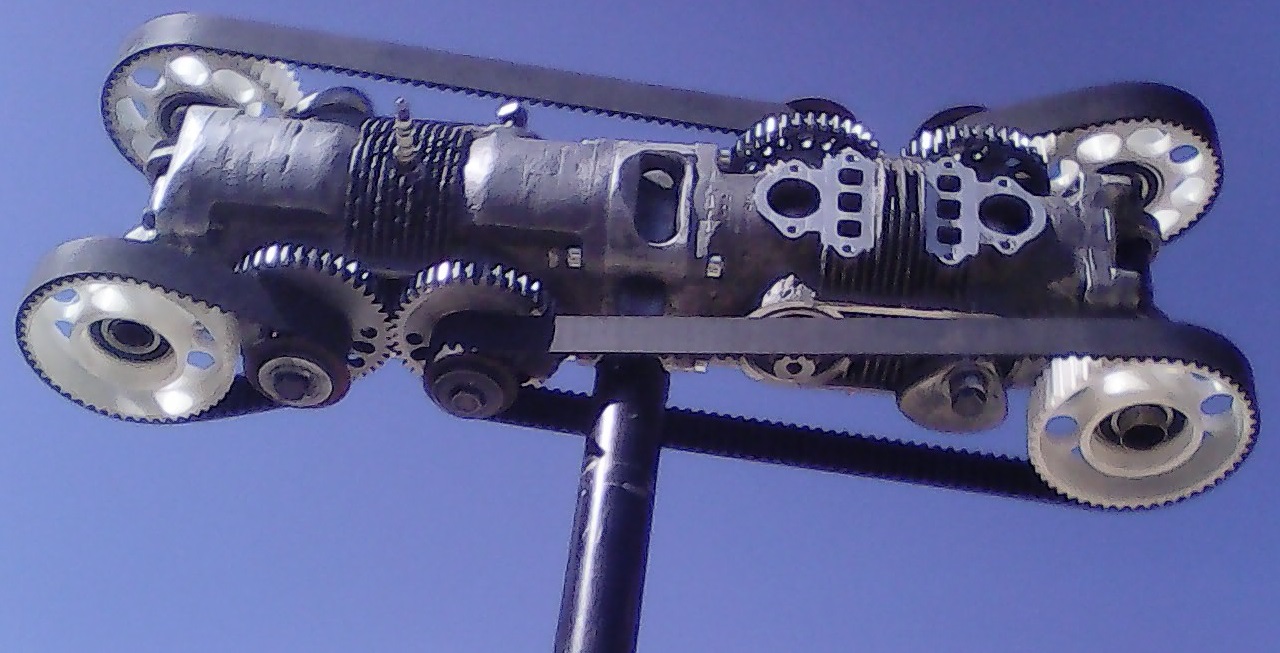This is personal mobility device yes? In my childhood i watched a cartoon named 'inspector gadget' voiced by Don Adams of 'get smart'. His device was a fold away propellor and controls which had 2 control rods directly from the swashplate above his head.
Of course this is a cartoon and the device would need contra rotating propellors to work for real, based on helicopter design rather than Mr Patakos inspiration from RC bicopter.
Bicopters need freedom to gimbal independantly rather than be fixed in all axis.
Maybe you could use the cylinder sleeve as an axis of articulation, each crankshaft rotates independently on the cylinder axis, that would create a true Bicopter combined with variable pitch props. Im spoiling the fun though, others can conclude the dynamics involved via RC drone bicopter knowledge, please share video footage of test flights, it seems exciting.
- Login or Register
No account yet? Sign up

